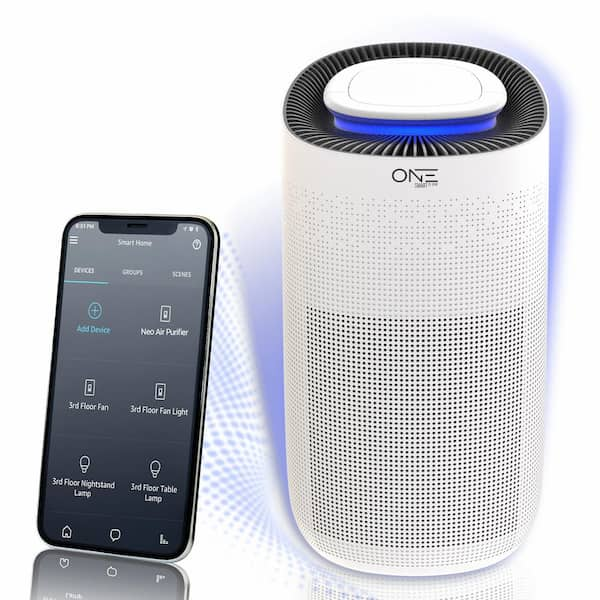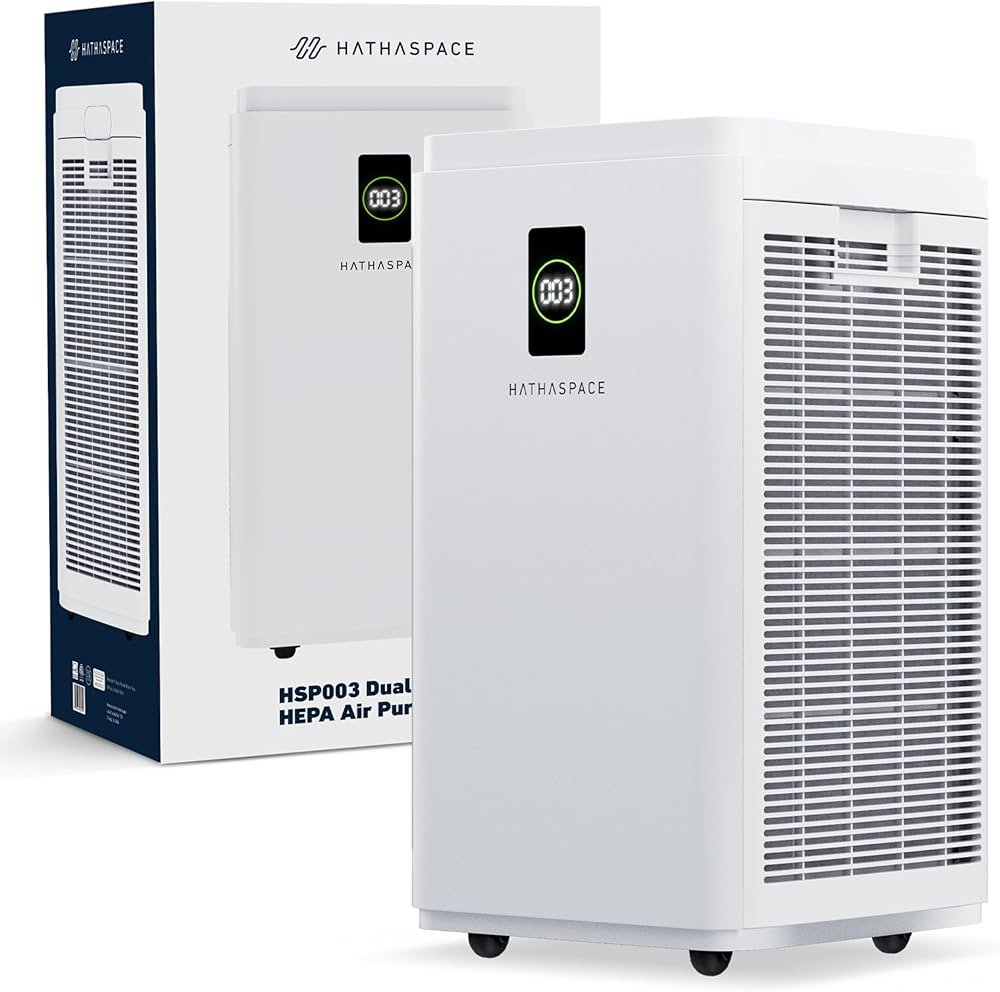Air purifiers come with different types of sensors. Smart sensors and basic sensors are popular choices.
Understanding the differences can help you choose the best one for your needs. Air quality is crucial for a healthy home. Air purifiers help by removing pollutants and allergens. But not all air purifiers are created equal. Some have advanced smart sensors, while others use basic sensors.
Smart sensors offer more precise air quality monitoring. They can adjust settings automatically. Basic sensors, on the other hand, are simpler and often cheaper. Comparing these two types can help you make an informed decision. This guide will explore the pros and cons of each, helping you find the right air purifier for your home.
Introduction To Air Purifiers
Air purifiers have become essential in modern homes. They help to keep the air clean and healthy. Many people worry about air pollution. Air purifiers can reduce this worry. They remove harmful particles and improve indoor air quality.
Importance Of Air Quality
Good air quality is crucial for health. Polluted air can cause respiratory problems. Children and older adults are at higher risk. Clean air can prevent allergies and improve sleep. It is vital to have a good air quality for overall well-being.
How Air Purifiers Work
Air purifiers use filters to trap dust, pollen, and other particles. They draw air through these filters. Clean air is then released back into the room. Some purifiers also use UV light to kill germs and bacteria.
| Feature | Air Purifiers With Smart Sensors | Basic Sensors |
|---|---|---|
| Detection | High Accuracy | Low Accuracy |
| Automation | Automatic Adjustments | Manual Adjustments |
| Cost | Expensive | Affordable |

Credit: www.homedepot.com
Types Of Sensors In Air Purifiers
Air purifiers come with different types of sensors. These sensors help in detecting pollutants and controlling the purifier’s performance. Understanding the types of sensors can help you choose the right air purifier for your needs.
Basic Sensors
Basic sensors are common in many air purifiers. They usually detect a limited range of pollutants. For example, dust and smoke. These sensors often use simple technology. They may have a lower detection accuracy. Basic sensors can still improve air quality. But they may not respond quickly to changes in the environment.
Smart Sensors
Smart sensors are more advanced. They can detect a wider range of pollutants. For example, pollen, pet dander, and volatile organic compounds (VOCs). Smart sensors often use laser or infrared technology. This makes them more accurate. They can quickly adjust the purifier’s settings. Some smart sensors even connect to mobile apps. This allows you to monitor air quality remotely. Smart sensors offer better control and performance. They can make a noticeable difference in air quality.
Functionality Of Basic Sensors
The functionality of basic sensors in air purifiers is important. These sensors detect harmful particles in the air. They trigger the purifier to start cleaning the air. Basic sensors focus on simplicity and essential functions.
Detection Capabilities
Basic sensors identify common pollutants. These include dust, pollen, and smoke. They use simple technology for detection. This makes them reliable for everyday use. But they may not detect smaller particles. Advanced pollutants can go unnoticed. Basic sensors often lack precision. They measure air quality with average accuracy. This is usually enough for general needs.
Performance In Various Conditions
Basic sensors work well in stable environments. They perform best in homes with typical air quality issues. They can struggle in extreme conditions. High pollution levels may overwhelm them. Rapid changes in air quality can also be a challenge. Basic sensors may not respond quickly. Their performance can vary based on placement. Near kitchens, they might detect more particles. Bedrooms might show cleaner readings.
Advantages Of Smart Sensors
Smart sensors in air purifiers offer several advantages over basic sensors. They enhance the air purifying process by providing more accurate and efficient detection and monitoring. These sensors can significantly improve the air quality in your home. Let’s explore some key benefits of smart sensors in air purifiers.
Advanced Detection
Smart sensors detect a wider range of pollutants. They can identify dust, pollen, smoke, and even harmful gases. This ensures a cleaner and healthier environment. Basic sensors often miss many harmful particles.
Real-time Monitoring
Smart sensors offer real-time air quality monitoring. They continuously track changes in the air quality. This allows the purifier to adjust its settings automatically. You get cleaner air without any manual adjustments. Basic sensors lack this capability.
Comparing Smart And Basic Sensors
Choosing an air purifier is important for your health. Understanding the differences between smart sensors and basic sensors helps in making the right choice. In this section, we will compare the two types of sensors in terms of accuracy, efficiency, cost, and value.
Accuracy And Efficiency
Smart sensors offer higher accuracy. They detect small particles and adjust the air purifier settings automatically. This ensures cleaner air with minimal effort from the user. Basic sensors, on the other hand, have limited detection capabilities. They may not capture tiny pollutants, resulting in less effective purification.
Efficiency also varies. Smart sensors optimize air purifier operation based on real-time air quality data. This saves energy and extends the life of the purifier. Basic sensors lack this adaptability, often running at a constant speed regardless of air quality. This can lead to unnecessary energy consumption.
Cost And Value
Smart sensors come with a higher price tag. The advanced technology and features justify the cost for many users. They provide better air quality monitoring and control. Basic sensors are more affordable. They lack advanced features but still offer basic air purification.
Value depends on user needs. For those with allergies or respiratory issues, smart sensors offer better protection. For general use, basic sensors may suffice. Investing in smart sensors can be seen as a long-term benefit. They provide better air quality and energy efficiency, which can offset the initial cost.
Energy Efficiency And Maintenance
When choosing an air purifier, energy efficiency and maintenance are key considerations. Understanding the differences between models with smart sensors and those with basic sensors can help you make an informed decision. This section dives into these aspects, providing clarity on power consumption and maintenance requirements.
Power Consumption
Energy efficiency is a critical factor in air purifiers. Smart sensors adjust the device’s operation based on air quality. This results in optimized power use. They only work as hard as needed, saving energy.
Basic sensors, on the other hand, operate at a constant rate. This can lead to higher power consumption. They may run at full capacity even when air quality is good. Over time, this can increase your electricity bill.
| Feature | Smart Sensors | Basic Sensors |
|---|---|---|
| Power Consumption | Variable, based on air quality | Constant, regardless of air quality |
| Energy Efficiency | High | Low |
Maintenance Requirements
Maintenance is another crucial aspect. Air purifiers with smart sensors often come with advanced features. These include filter change alerts and self-cleaning modes. This reduces manual intervention and ensures optimal performance.
Basic sensors lack these advanced features. Users must manually check and replace filters. This can be time-consuming and may lead to neglect, affecting air quality.
- Smart Sensors: Provide filter change alerts
- Basic Sensors: Require manual filter checks
Regular maintenance ensures the purifier works efficiently. It also prolongs the device’s lifespan. Choosing a model with smart sensors can simplify this process.
User Experience And Convenience
Air purifiers with smart sensors adjust settings automatically based on air quality. Basic sensors require manual adjustments, offering less convenience. Smart sensors enhance user experience by providing real-time updates and optimal performance.
Air purifiers are essential for maintaining a healthy indoor environment. Smart sensors and basic sensors offer different user experiences. Let’s explore how they compare in terms of ease of use and integration with smart home devices.Ease Of Use
Air purifiers with smart sensors often come with user-friendly interfaces. They adjust settings automatically based on air quality. This reduces the need for manual adjustments. Users can enjoy cleaner air without constant monitoring. Basic sensor air purifiers require more manual input. Users need to check the air quality and adjust settings themselves. This can be time-consuming and less convenient. Smart sensors make the process hassle-free.Integration With Smart Home Devices
Smart sensor air purifiers integrate seamlessly with other smart home devices. Users can control them using voice commands via smart speakers. They can also connect to home automation systems for a cohesive experience. Basic sensor air purifiers lack these advanced features. They operate independently and do not connect with other devices. This limits their functionality and convenience. Smart home integration enhances user experience by offering more control and flexibility. “`
Credit: www.amazon.com
Choosing The Right Air Purifier
Choosing the right air purifier can be challenging. You need to consider various factors. Smart sensors and basic sensors are two common options. Both have their pros and cons. Let’s delve into the details.
Factors To Consider
- Air Quality Sensors: Smart sensors adjust settings automatically. Basic sensors require manual adjustments.
- Price: Smart sensor air purifiers are often pricier. Basic sensor models are usually more affordable.
- Maintenance: Smart sensors often require less manual maintenance. Basic sensors need regular checks and adjustments.
- Energy Efficiency: Smart sensors can be more energy-efficient. They optimize the purifier’s performance based on air quality.
- Ease of Use: Smart sensors offer more convenience. Basic sensors can be more straightforward for some users.
Best Options On The Market
| Model | Sensor Type | Price Range | Key Features |
|---|---|---|---|
| Dyson Pure Cool | Smart Sensor | $$$ | Real-time air quality reports, auto-adjust settings, voice control |
| Levoit Core 300 | Basic Sensor | $$ | 3-stage filtration, quiet operation, compact design |
| Honeywell HPA300 | Basic Sensor | $$$ | HEPA filtration, large room coverage, intuitive controls |
| Blueair Blue Pure 211+ | Smart Sensor | $$$ | Particle and carbon filter, energy-efficient, auto-adjust settings |
Choosing between smart sensors and basic sensors depends on your needs. Assess the factors above to make an informed decision.

Credit: guardiantechnologies.com
Frequently Asked Questions
What Are Smart Sensors In Air Purifiers?
Smart sensors detect air quality in real-time. They adjust the purifier’s performance automatically for optimal air purification.
How Do Basic Sensors In Air Purifiers Work?
Basic sensors detect general air quality changes. They do not adjust settings automatically but indicate when adjustments are needed.
Are Air Purifiers With Smart Sensors More Efficient?
Yes, air purifiers with smart sensors are more efficient. They adjust settings automatically for optimal air purification.
Do Smart Sensors Increase The Cost Of Air Purifiers?
Yes, air purifiers with smart sensors are generally more expensive. The advanced technology adds to the overall cost.
Conclusion
Smart sensors enhance air purifier efficiency. They adjust settings automatically, ensuring clean air. Basic sensors lack this adaptability. Choosing smart sensors means better air quality management. They respond to pollution changes promptly. Basic sensors require manual adjustments. Smart sensors offer convenience and peace of mind.
They are worth the investment for health-conscious individuals. Ultimately, smart sensors provide a hassle-free way to maintain clean indoor air.
Rakib Sarwar is a Registered Pharmacist and a reputed health and wellness blogger. He has a great interest in Air purifiers.
